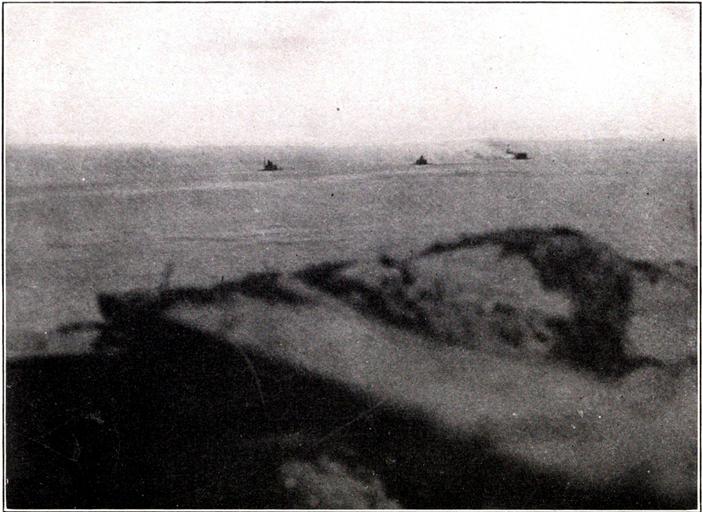MAKE A MEME
View Large Image

| View Original: | US_Ships_Weehawken,_Montauk,_&_Passaic_firing_on_Fort_Moultrie,_September_8,_1863.jpg (1994x1454) | |||
| Download: | Original | Medium | Small | Thumb |
| Courtesy of: | www.flickr.com | More Like This | ||
| Keywords: abstract texture photo border "On the highest point of the battered dust heap that was the still untaken fortress of Sumter, the Confederate photographer, Cook, planted his camera on September 8, 1863, and took the first photograph of ironclads in action—the monitors Weehawken, Montauk and Passaic, as they were actually firing on the Confederate batteries at Fort Moultrie. The three low-freeboarded vessels, lying almost bows-on, at the distance of nearly two miles, look like great iron buoys in the channel, but the smoke from their heavy guns is drifting over the water, and the flames can almost be seen leaping from the turret ports. Although Fort Moultrie was the aim of their gunners, Cook, with his head under the dark cloth, saw on the ground glass a shell passing within a few feet of him. Another shell knocked one of his plate-holders off the parapet into the rain-water cistern. He gave a soldier five dollars to fish it out for him. He got his picture—and was ordered off the parapet, since he was drawing upon the fort the fire of all the Union batteries on Morris Island. It seems incredible that such a daring photographic feat, and one of such historic interest, could have remained unpublished for nearly half a century—until one recalls the absence of any satisfactory method for reproducing photographs direct during the generation succeeding the war. Before photo-engraving became perfected, thirty years or more had passed, and most of the few negatives taken by Confederates had vanished through fire, loss, and breakage. Fortunately, this has been preserved—one of the most vivid of any war." The Photographic History of the Civil War Vol. 1 by Francis Trevelyan Miller, 1877-1959; Robert S. Lanier (Robert Sampson) Published by The Review of Reviews Company, New York, 1911 "On the highest point of the battered dust heap that was the still untaken fortress of Sumter, the Confederate photographer, Cook, planted his camera on September 8, 1863, and took the first photograph of ironclads in action—the monitors Weehawken, Montauk and Passaic, as they were actually firing on the Confederate batteries at Fort Moultrie. The three low-freeboarded vessels, lying almost bows-on, at the distance of nearly two miles, look like great iron buoys in the channel, but the smoke from their heavy guns is drifting over the water, and the flames can almost be seen leaping from the turret ports. Although Fort Moultrie was the aim of their gunners, Cook, with his head under the dark cloth, saw on the ground glass a shell passing within a few feet of him. Another shell knocked one of his plate-holders off the parapet into the rain-water cistern. He gave a soldier five dollars to fish it out for him. He got his picture—and was ordered off the parapet, since he was drawing upon the fort the fire of all the Union batteries on Morris Island. It seems incredible that such a daring photographic feat, and one of such historic interest, could have remained unpublished for nearly half a century—until one recalls the absence of any satisfactory method for reproducing photographs direct during the generation succeeding the war. Before photo-engraving became perfected, thirty years or more had passed, and most of the few negatives taken by Confederates had vanished through fire, loss, and breakage. Fortunately, this has been preserved—one of the most vivid of any war." The Photographic History of the Civil War Vol. 1 by Francis Trevelyan Miller, 1877-1959; Robert S. Lanier (Robert Sampson) Published by The Review of Reviews Company, New York, 1911 | ||||